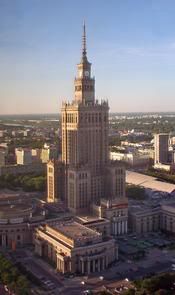Speaking of integration - Polish immigrants in Texas
The Bandera Bulletin:
Our Polish heritage: rugged individualism and community spirit
As the St. Stanislaus parish celebrates its 150th anniversary, much is being written about the first Silesian families who settled in Bandera in 1854. Today people marvel at their courage, resourcefulness and determination to succeed in a new country that was a hostile wilderness. Looking at the background of these people can help us understand how they overcame the hostilities of the frontier. Their experience contributes to an understanding of how Bandera developed into a unique Hill Country town.
The homeland of what we call the Polish immigrants was [and still is...] known as Silesia. In the 1800s it was under Prussian control. Despite the fact that the region had been separated from Poland for over five hundred years, it had a strong Polish identity.
The culture of the region was a rich blend of east and west; people were constantly interacting with many ethnic groups who spoke different languages. German was the language used for business, while Polish and various dialects were used at home. Many of the Texas immigrants spoke German and Polish, as well as the Silesian dialect. Those in the first wave of immigration to Texas were educated people who typically were land owners in Silesia. They were in a social class between the gentry and laborers.
Silesia was known as a poor region. When natural disasters occurred, such as droughts and plagues, the people of Silesia were often the hardest hit. Difficult economic conditions, mandatory military service in the Prussian Army for men of ages 20 to 40, epidemics of typhus and cholera, increasing crime and devastating floods were some of the hardships the people of Silesia endured during the 1800s. One ironic coincidence is that all of the regions the Silesian immigrants came from were subject to periodic flooding.
The area was predominantly Catholic, and their deeply held religious beliefs sustained them for centuries. When letters from Father Moczygemba in Texas, a priest from their own region, reached them, the Silesians were predisposed to accept his claims of opportunity in Texas. From 1852 to 1854, Father Moczygemba was assigned to the town of New Braunfels, where he saw German immigrants prosper in an open society. In 1854 he moved to the Alsatian community of Castroville, where again he witnessed the success of European immigrants. His letters inviting people to come to Texas for a better life were treated as gospel. As the Silesians reacted positively to his letters, Father Moczygemba selected two areas for the relocation of the Silesians, one in an unnamed area in Karnes County and the other in Bandera.
When a family decided to emigrate, the head of the household had to petition the King of Prussia for permission to leave the country. Single women needed the permission of their fathers to be included in the petition. When a Document of Dismissal from Prussia was issued, the rights of being a Prussian citizen were forsaken.
Offsetting the difficulties of selling their possessions and saying good-bye to family and friends were the promises of their own church, free land and economic opportunity waiting for them. Speculating about the new country was one way to get through the arduous two-month sea voyage.
The Weser, which was the first ship to bring the Silesians to America, landed at Galveston on December 3rd, 1854. A small group of Silesians followed a few days later on the Antoinette. The 159 Silesians then went by boat to Indianola, where they progressed on foot or in carts to San Antonio, where Father Moczygemba met them. He led most of the group to the area that would become known as Panna Maria.
Knowing that the families going to the more dangerous site of Bandera would have to be self-sufficient, the priest selected families according to the skills of the men, hardiness of the women and ages and sex of the children. In February 1855, they were taken by teamsters in ox carts to Bandera, where jobs had been secured for them in the James and Montel sawmill. The drivers were instructed to take anyone into Bandera for free, but they were prohibited from taking any one out of Bandera.
While they had no way to leave Bandera, after giving up their homeland and suffering the hardships of the journey, it is unlikely that any of the Silesians would have considered leaving. They had no other dream to pursue.
The influx of Silesians to Texas occurred in a three year time period, 1854 to 1856. The Texas drought of 1856 and 1857 halted further immigration. Despite the hardships, the Silesians established colonies, churches and schools. In Bandera, while language, customs and dress may have distinguished the Silesians from other townspeople, the town was so small and the hardships of living on the frontier so great, all of Bandera's citizens had to work together to survive. This was especially true in times of crisis.
The same can be said of present-day Bandera. The town continues to attract unique individuals who pursue their lives with minimal interference. But, when a crisis occurs, the outpouring of assistance is overwhelming. Many towns in the Hill Country are known for the predominance of one ethnic group. Fredericksburg and New Braunfels are German; Castroville is Alsatian. Bandera remains an eclectic group of individuals. The first Silesians-or as we now know them, Polish-offer to us an example of how to live with dignity in hardship, and how to survive and flourish with faith and hard work.
Map of Polish regions here














0 Comments:
Post a Comment
< Main